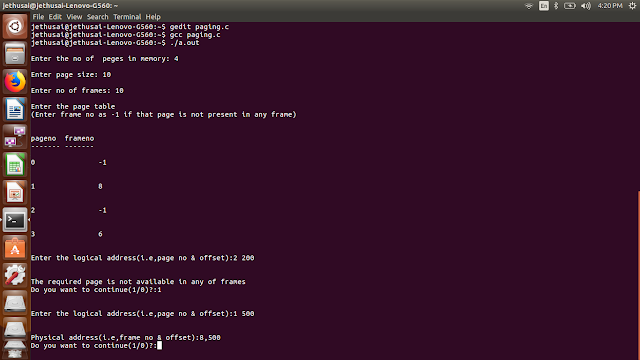Functions of Operating System
Functions of Operating System
Different
functions of operating system. Operating system performs the following
functions:
1.
Booting
Booting
is a process of starting the computer operating system starts the computer to
work. It checks the computer and makes it ready to work.
2.
Memory Management
It
is also an important function of operating system. The memory cannot be managed
without operating system. Different programs and data execute in memory at one
time. if there is no operating system, the programs may mix with each other.
The system will not work properly.
3.
Loading and Execution
A
program is loaded in the memory before it can be executed. Operating system
provides the facility to load programs in memory easily and then execute it.
4.
Data security
Data
is an important part of computer system. The operating system protects the data
stored on the computer from illegal use, modification or deletion.
5.
Disk Management
Operating
system manages the disk space. It manages the stored files and folders in a
proper way.
6.
Process Management
CPU
can perform one task at one time. if there are many tasks, operating system
decides which task should get the CPU.
7.
Device Controlling
Operating
system also controls all devices attached to computer. The hardware devices are
controlled with the help of small software called device drivers.
8.
Printing controlling
Operating
system also controls printing function. It a user issues two print commands at
a time, it does not mix data of these files and prints them separately.
9.
Providing interface
It
is used in order that user interface acts with a computer mutually. User
interface controls how you input data and instruction and how information is
displayed on screen. The operating system offers two types of the interface to
the user:
1.
Graphical-line interface: It interacts with of visual environment to
communicate with the computer. It uses windows, icons, menus and other
graphical objects to issues commands.
2.
Command-line interface: it provides an interface to communicate with the
computer by typing commands.

Thanks your for share to provide deep information on Functions of operating system.
ReplyDelete